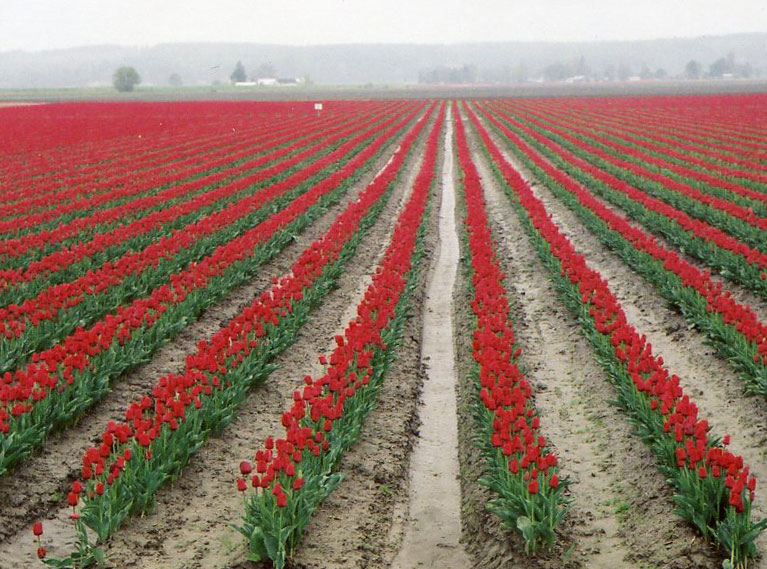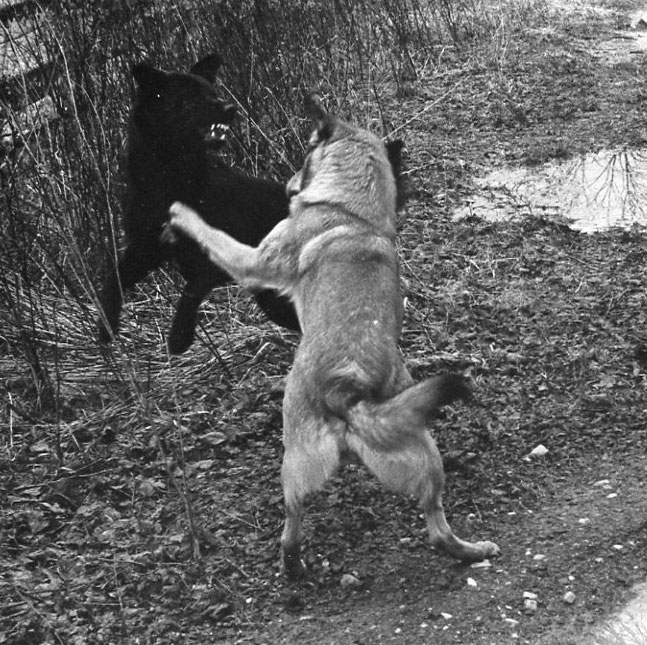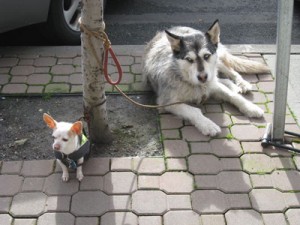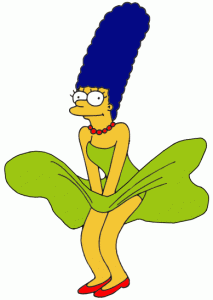Whenever people ask me about my book, I hear the words coming out of my mouth before I can stop them, “Oh, it’s just a romance.”
This goes against all the advice of those in the romance industry, who are constantly trying to find ways to get the media and the public to give romance writers the respect they deserve. It’s an uphill battle. In most literary circles there’s no faster way to inspire a condescending sneer than to admit to being a romance novelist. In the sharp-toothed publishing pecking order romance novelists rank somewhere between the trendy graphic books and the virulent porno market.
My problem, I think, is that I’m a book snob too. Unlike the majority of the women who belong to the Romance Writers of America, I did not grow up reading lusty tales about raven haired beauties who tame the rakes. In my world a rake is a garden tool. My earliest reading experiences, the ones that imprinted my intellectual soul with a hunger for dry wit and happy endings, came from the novels of P.G. Wodehouse. I was eight years old when I first walked to the Jefferson Village public library in Falls Church and stumbled onto one of his divinely silly stories about the antics of Bertie Wooster and his man Jeeves, and I have been reading and rereading them ever since.
In my view, Wodehouse succeeds in putting on paper the kind of comedy of manners which has almost vanished in the current culture. Maybe that’s because nobody has manners anymore. But I don’t think so, although it does seem as if a regrettably large percentage of the population has come to accept rudeness as a kind of fashion statement. One can only hope that it will go the way of the bustle and hoop skirts. However, there’s another quality which distinguishes Wodehouse’s work from the current popular novel. There’s one thing you’ll never find in a Wodehouse novel. Actually, make that two things. There’s no sex. And no death. This is how you know it’s fiction.
Anyway. I mention Wodehouse because when people ask me what kind of book I write, I wish I could say, I write diverting little comedies like those of P.G. Wodehouse. But the market for such material is limited it seems. That was the first thing I learned when I set out to write fiction after leaving the newspaper business. The first novel I wrote was a kind of love letter to Fauquier, though it was set in an imaginary town, and peopled by totally imaginary characters. It was about a lovely young summer intern at a small weekly newspaper who becomes caught up in romance and intrigue when the tiny town gets selected for a visit from the President on his reelection tour.
Those of you who have lived here long enough may recall the delirium that descended on Main Street here when Bill Clinton and Al Gore stopped by for a carefully orchestrated appearance during the 1992 campaign. They were shaking hands on Main Street just outside the door here, and there were secret service men on the roof of Theresa’s Flowers. The memories of that event sparked my writing, but the plot of my novel was thickened with eccentric characters and colorful coots, and it had a happy, if perhaps slightly unrealistic, ending. But this was fiction, I thought. I could let myself go.
Of course, the two dozen agents and publishers who subsequently sent me rejection letters taught me that if you let yourself go as a writer, you probably won’t go very far. I was frustrated and disappointed, and immediately wrote another book based on my experiences as a singer in a party band. But here I was hampered by the fact that my live-in editor, my husband who played bass in the band, was worried that I would alienate all our old friends, so the book which eventually came out of it was a hybrid that now rests in perpetuity at the bottom of a drawer.
By this time, nearly two years had passed since I first decided to throw myself into the fiction business, and I was beginning to dread every social occasion because I knew sooner or later someone would turn to me and ask, “So, what do you do?” If you say, “I’m a writer,” then they ask, “Have you gotten anything published?” And then the long dreary saga unfolds.
Not being a carefree 20-something with all the time in the world, I decided I had to be more strategic with my next book. I started reading up on the publishing industry and learned that in order to market your work, you have to be able to label it. The dominant genres boil down to a handful. You’ve got your crime fiction, your suspense thrillers and your sweeping historical sagas. There’s the occasional genre breaking blockbuster, like The DaVinci Code or literary success, like The Life of Pi.
But, for those of us who don’t feel up to the task of generating drama on a massive scale, the widest road to getting published is the one that’s paved with romances. Romance books account for 30 percent of all books sold in this country. More than 2,000 romances are published each year. And the only unbreakable rule in the modern romance publishing business is that the story has to end happily.
Well, I said to myself, I can do that.
So, I did. But before I started I bought a slender little book called You Can Write A Romance written by the mother-daughter duo who founded Romance Writers of America. The book helped me to stay focused on the goal and not wander down any of the goofy sidetracks that frequently derail my train of thought. I wrote the book in three months. Then, I needed a game plan for getting it published. Having failed to get any editor’s attention through the query letters that I had dutifully sent out with my earlier books, this time I wanted to better my chances and the way to do this, the manual assured me, was to join the RWA.
I am not a joiner, but I plunged ahead and sent in my dues because only by doing so would I be eligible for a pitch session with an editor or agent at the national conference, which was fast approaching that summer in New York. The number of these sessions is limited and they are allotted to writers based on their previous track record. Published authors get the first pick. Then the writers who have won awards in contests. And finally, the unknown, ‘unpubs’ like me are allowed into the game.
You get eight minutes. Eight minutes in which to summarize your years of effort and captivate a total stranger with your spiel about your book in the hope that they will ask to see more of it. The older, wiser pitch artists have it boiled down to one sentence. I worked hours to produce the one liner that would snag the editor’s attention. And then, about a week before I left for New York, I got an email informing me that the editor with whom I’d been granted an audience was from Avalon Books, a publisher whose standards for decency are among the strictest in the business. While many, if not most, romance publishers are looking for hot sexy romance, the kind that makes you squirm in your seat, Avalon will not accept any manuscript with sex scenes, or rough language, or even a hint of immoderate drinking. They allow a little more latitude in their line of westerns. The cowboys are allowed to say damn and hell, in moderation, and visit the saloon on occasion.
But in an Avalon romance, you can hint at hanky panky, but you can’t put in on the page.
Once I learned this I hastily edited my manuscript and removed any four or five letter words which might be deemed offensive. I told myself that I wasn’t selling out. After all, P.G. Wodehouse wrote more than 90 books in his career and never needed profanity to get a laugh so I didn’t either.
I don’t remember much about that first pitch session. It went by so fast. The editor was a girl about the age of my oldest daughter. She was perky and enthusiastic. She said she liked my idea right away and asked me to send her a synopsis and the first three chapters and that was it. I was elated. The excitement wore off during the two years it took after that meeting before the day when my first book was published.
Since then I’ve had more pitch sessions, at other conferences, and I’ve learned that it’s not that uncommon for an editor to ask to see a synopsis and the first three chapters. It’s getting to the next level in the game that is tricky. And, in part, I think my problem is that at heart I’m not a romance writer. Not that there’s anything wrong with it.
But I’m not one. And I can’t fake it.
I realized this when I attended a romance writers conference in Boston last spring. It was called the Fool For Love conference, and the pitch sessions were scheduled on April 1. I was there, as usual, to meet with an agent to pitch a book. But, though several hundred of the women there had come for the same purpose, they differed from me in that all of them actually read and enjoy the romance genre. This was clearly evident during one of the highlights of the Boston conference, in which the women played a version of Jeopardy about romance novels, featuring questions about the dozens of popular heroines and hunks whose passions inflame those paperbacks you see on the shelves at the grocery store right beside the latest issues of Cosmopolitan.
The difference between me and those women who can play Jeopardy about the works of Georgette Heyer is that, honestly, I have never read any of her works. Nor have I read Nora Roberts, or Sherrilyn Kenyon. I did read a Julia Quinn book on a train once just to get a sense of the current standard for steamy romance, and I felt that queasy sense of embarrassment because the cover depicted a woman whose lush breasts were straining against her plunging satin neckline almost as hard as the bare chested studly dude whose smoldering dark eyes were locked on hers. The plot was one of those where the brooding sexy newly widowed hero hires a governess for his two children and discovers that beneath her modest exterior burns a fiery passion, blah, blah, blah. I gotta admit, it wasn’t boring. I kept having to put it down every few minutes so I could let my heart rate recover. I felt so used.
So, yeah. I can admire the writing skills of some of those authors, but, in truth, I’m just not drawn to read that kind of stuff. If I’m in the mood for romance, my tastes lean more toward the contemporary social context and irony of writers like Helen Fielding, of Bridget Jones’s Diary fame or Anna Maxted, whose Running in Heels was thought provoking and hilarious. Both of those authors write sexy humor without the kind of ‘hero who needs to be tamed’ thing that still seems to be the standard in mainstream romance.
And, I also have gotten fed up with most of the whole chick lit genre. All those pink paperbacks on the tables at Borders. I mean, maybe I’m just over the hill and out of touch, but it saddens me to think that there’s an entire generation of women for whom shopping and sex are like competitive sports. Okay, maybe if I were a single career girl on the make in the city I might find the antics of these heroines amusing. But really? These books where the heroine has sex with a fireman in the elevator in the first chapter just leave me feeling, oh, I don’t know. Fed up? Maybe it’s envy. But it’s when the blurb on the jacket describes the author of this same feisty sex kitten as “our own Jane Austen” that I really feel the fire.
If I’m passionate about anything, it’s the sanctity of Jane Austen’s works. As far as I’m concerned, there is no one writing today who comes close to her brilliant insight and compassionate characterization. I’m not sure anyone could in this century, because the times really have changed. More to the point, the times have accelerated. I don’t know whether the fault lies with television, or the internet or the blistering pace of modern film editing, but few authors today are allowed the luxury of contemplative narrative. It’s got to be action, action, and more, faster action, with a side order of violence and/or sex, or you can forget about selling those movie rights. Yet, isn’t it amazing the way they keep making films about Jane Austen’s marvelously slow and thoughtful novels? There’s a new one coming out this month. True, they aren’t luring in that lucrative 12-to-28 year old male market that seems to be ruining everything for the rest of us, but at least it gives me hope.
One aside here just for any Jane Austen fans in the room, if you haven’t read Karen Joy Fowlers’s Jane Austen Book Club, you are in for a treat.
At any rate, now that I am a romance writer of sorts, I’ve met a lot of other romance writers, and I’m here to tell you they are an amazingly diverse group of women who know how to laugh. They are genuinely supportive and many of them are also incredibly talented, courageous and resourceful.So, I’m working on a new response to the questions about my romance book. I call it The Wilder Defense.
Some of you may have seen a movie made sometime in the 80s called Romancing the Stone. It starred Kathleen Turner and Michael Douglas and it was about a successful romance writer who goes off to Colombia on some far-fetched mission to rescue her kidnapped sister and meets a handsome adventurer in the jungle, and guess what? Yes indeedy. They exchange phone numbers and agree to go out for coffee. Not. So, anyway, as things hot up, they find themselves in this remote village surrounded by gun toting drug runners and just as it looks as though the movie is going to end a reel too soon, the heroine tries, like any self-respecting writer would, to talk her way out of it, and the hero taunts her, saying, “Let’s see you write your way out of this, Joan Wilder.” And suddenly the little window in the door behind them slides back like a shot and the drug kingpin sticks his head out and asks, “Joan Wilder? The Joan Wilder?”
It’s a beautiful moment. She smiles and says yes, and the drug lord’s face lights up like a birthday cake. He throws open the door and welcomes her into his well-appointed lair, where he raves about her books, which he has been reading to his men for years. It’s a veritable love fest. He can’t do enough for her. This scene made a deep and lasting impression on my husband, who has, needless to say, never read any romance but mine. Yet, from the moment he saw that scene, he got it. He grasped the essential value of romance novels. At their best, they tap into the well of kindness and love that lies deep within every human, no matter how menacing or mundane they may appear. We may not all have the potential to be great lovers, or sustain grand romance, but we can all appreciate it when we see it, or read it.
Granted, romance may seem a frivolous conceit in a world so full of suffering and trouble. Yet, imagine a world without romance. I’d rather not.
Romance is the sugar that coats the bitter pill of reality and makes it a little easier to swallow. Life is hard. Love is never easy. But a little touch of romance can work wonders.
So, now, whenever I feel embarrassed to admit that my one and only published novel is a romance, I think of Joan Wilder. Sure, she was a fictional creature. But, so am I.





